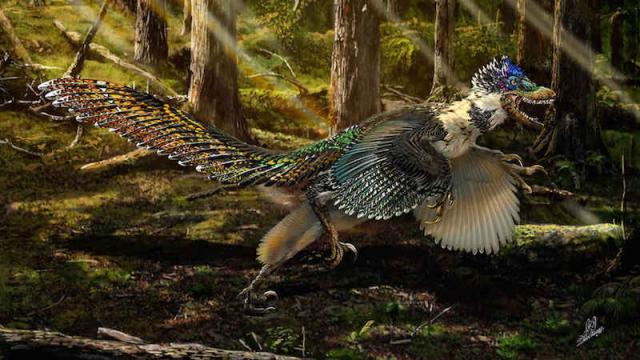Do you hear that sound? It’s 65 million years ago and there’s a dinosaur calling out through the wilds. But it’s not a roar. Instead new research says that sound would probably be better described as a “coo” or a “mumble”.
Artist’s conception of Zhenyuanlong suni (Image: Chuang Zhao)
Researchers from the University of Texas did a comprehensive review of the vocal organs of birds and the kinds of sounds they made. Then they matched those up with the vocal organs found in fossilised dinosaurs for a paper coming out next month in Evolution. The results, they say, suggest that many dinosaurs were far more likely to vocalise with a closed-mouth — perhaps, a disapproving “hmm” or a more pensive “umm” — than with a full-throated roar.
This is far from the only finding palaeontologists have borrowed from the birds. Feathers are replacing scales more and more often in our dinosaur drawings. A group of scientists recently stuck a prosthetic tail on a chicken to make it mimic the gait of a bipedal dinosaur.
Some may say that this comparison diminishes the awesome power of the dinosaur, but the truth is that it only makes them all the more terrifying.
Still don’t think a coo sounds so intimidating? Well, listen to this:
Now imagine that ostrich suddenly 20m taller and stepping right through that fence like it wasn’t even there.
“What is it doing?” asks the unnamed videographer in the clip — moments before it becomes unsettlingly clear exactly what the ostrich is doing. It’s teaching you the true meaning of fear.
